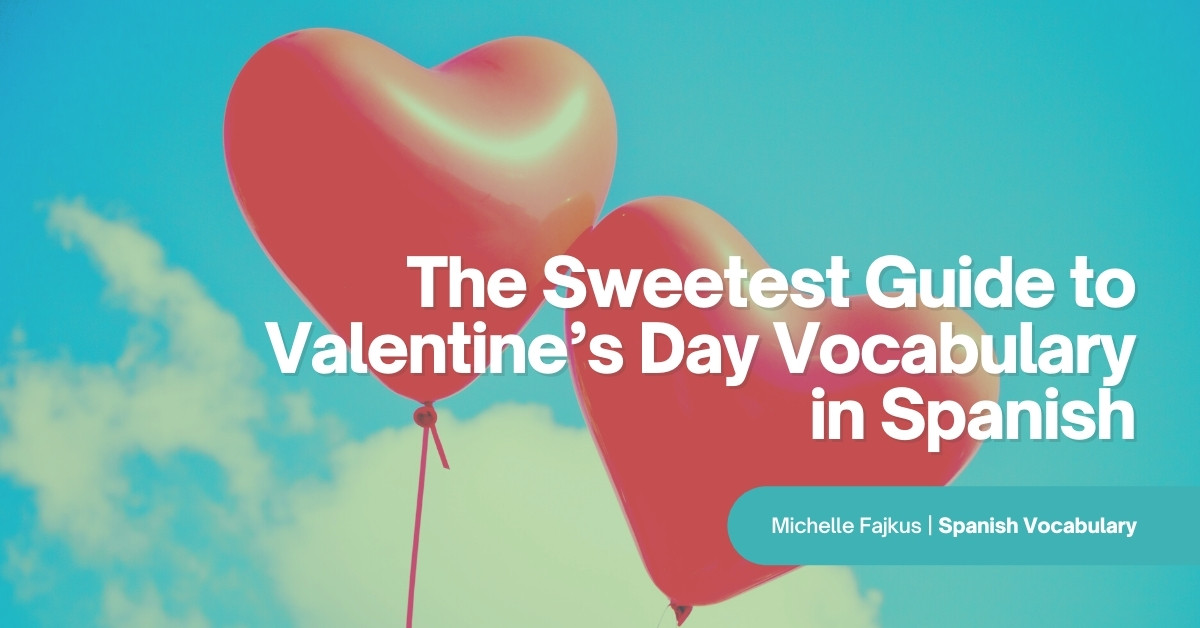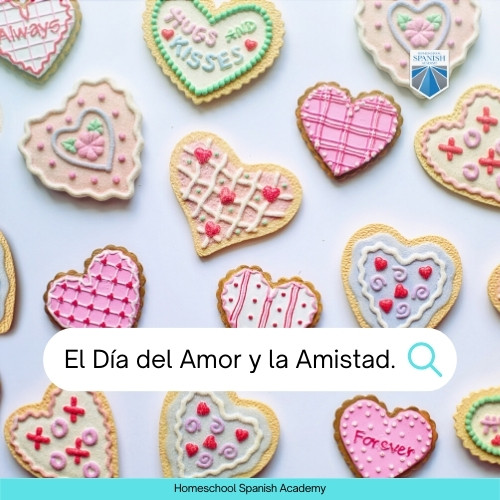
The Sweetest Guide to Valentine’s Day Vocabulary in Spanish
Valentine’s Day is on the horizon. In Latin America, much like in the United States, it’s a day when upscale, romantic restaurants are booked to capacity and shops are overflowing with flower bouquets and chocolate truffles. Happy couples walk along hand-in-hand, and everything is basked in rainbows and candlelight.
Chocolate, roses, lingerie, and love poems are some of the common gifts people offer their loved ones each year on February 14th. While you could argue that it is a consumer holiday full of false expectations and cliche shows of “love”, Valentine’s Day is nevertheless a holiday with many traditions in countries around the world, including Spain and Latin America.
In Latin America, Valentine’s Day is better known as El Día del Amor y la Amistad, or the day of love and friendship. Let’s take a look at how different Spanish-speaking countries celebrate this day!
Join 559 million people on the planet who speak Spanish!
Sign up for a free trial Spanish class today! ➡️

V-Day Around the World
Spain
In Spain, Valentine’s Day is not for a platonic love; the holiday is all about passionate romance. At the same time, some Spaniards refer to the holiday as Día del Corte Inglés. Corte Inglés is a popular department store chain in Spain. Hence, the name pokes fun at Valentine’s Day. This is akin to someone in the US calling it a “Hallmark holiday.”
Mexico
In Mexico, the official name of the holiday is Día de San Valentin (St. Valentine’s Day), but it is more commonly called El Día del Amor y la Amistad. While many people do give chocolates, flowers, and balloons to their romantic partners, a greater emphasis is put on celebrating friendships.
Guatemala
In Guatemala, the holiday is known as El Día del Cariño and it is celebrated similarly as in the United States. Candies, flowers, and romantic gifts are exchanged between companions. Furthermore, this is a special day for people to appreciate their amigos, familia, y compañeros (friends, family, and coworkers). This can be accomplished by exchanging gifts or just letting them know what they mean to you with a simple note or call.

El Salvador
In El Salvador on Valentine’s Day, the children play a game called Angelito or Amigo Secreto, which involves exchanging names and giving anonymous gifts, similar to Secret Santa.
Puerto Rico
Puerto Rico celebrates Valentine’s Day by throwing large public parties.
Ecuador
In Ecuador, the men traditionally serenade their loved one outside of their house at night.
Peru
In Peru, the romantic observers of the holiday give out colorful orchids rather than roses. Some sweethearts get hitched in mass weddings designed to accommodate many couples simultaneously. Peruvians celebrate both Carnival and Valentine’s Day around the same time, making for a grand celebration of love and bliss.
Colombia and Bolivia
Colombia and Bolivia celebrate in September rather than February. On September 20, Colombian secret admirers are encouraged to give gifts and profess their love.
Bolivians are doubly romantic, with Día del Amor y la Amistad on July 23, as well as Día de Amor (Love Day), which is celebrated in conjunction with Students’ Day, the Day of Spring, and Children’s Day. They exchange cookies, candies, and flowers on September 21. Both love-filled holidays take place during the long, cold Bolivian winter.
Argentina
On February 14, Argentines celebrate El Día de Los Enamorados (“Lovers’ Day”). Here, more of an emphasis exists on spoiling their significant other with gifts and sweets. Argentina also multiplies their celebration with a whole week from July 1-7 called Semana de la Dulzura (“Sweetness Week”) during which happy couples exchange sweets for kisses.
Brazil
Finally, in Brazil, Día de los Enamorados is observed on June 12 in honor of St. Anthony, the saint of marriage and matchmaking. This delay is due to the fact that Brazil’s February is monopolized by their famous Carnival celebration and street parade. Brazilians typically celebrate the day with a romantic dinner, exchanging gifts, and dancing to their country’s signature samba beat.
Fun-loving Spanish Phrases For Valentine’s Day Cards
Spanish is one of the world’s most poetic languages. Here are a few examples of sweet and romantic things you can say or write to your special Valentine:
- Te quiero mucho. – I love you very much.
- Te amo. – I love you.
- Te adoro. – I adore you.
- Acompáñame a cenar/bailar/etc. – Join me for dinner/dancing/etc.
- Abrázame. – Hug me.
- Besame. – Kiss me.
Te Quiero Versus Te Amo
Te quiero is the most common way to say “I love you” in Spanish. Since it translates literally to “I want you,” it may sound a bit strong to native English speakers, but in Spanish it has a lighter connotation of love and interest. Friends and relatives often say “te quiero” to each other.
Te amo is used exclusively in the romantic sense—not among family or platonic friends. Keep in mind that te amo could come across as a little overpowering if you haven’t been with your partner for long.
Here are some more helpful terms for expressing love and affection:
Valentine’s Vocabulary
| English | Spanish | Pronunciation |
| to cuddle | apapachar | ah-pah-pah-char |
| admirer | el admirador / la admiradora | ahd-meer-ah-doorahd-meer-ah-door-ah |
| dinner | la cena | sen-ah |
| date | la cita | see-tah |
| engaged (adj) | comprometido/a | kom-proh-may-tee-doh |
| heart | el corazón | kor-ah-sone |
| sweet (adj) | dulce | dool-say |
| sweets/candies | los dulces | dool-says |
| to fall in love | enamorarse | ay-nah-moh-rar-say |
| flower | la flor | floor |
| poem | el poema | poh-ay-mah |
| romantic (adj) | romántico/a | roh-man-tee-koh |
| feelings | los sentimientos | sen-tee-myen-tohs |
More Pet Names in Spanish
Spanish offers a plethora of terms of endearment. Use amorcito with an –o at the end regardless of whether you’re referring to a man or a woman. Why? The noun for love, amor, is masculine. Love remains love regardless of gender, and so does amorcito. Likewise, cariño retains its –o ending regardless of your beloved’s gender.
Because querido and querida are adjectives (meaning “loved” or “dear”), you should use querido when referring to a male and querida when referring to a female. Here are a few more pet names to call your sweetheart:
- Corazón (heart)
- Mi amor (my love)
- Mi cielo (my heaven/sky)
- Mi vida (my life)
¡Feliz día del cariño!
Valentine’s Day is celebrated with a wide variety of traditions from place to place. Anywhere in the world this holiday is observed, it is a time for love, family, friendship and enjoyment.
Want to learn how to speak Spanish, the language of love? Sign up for a free online class.

Join one of the 40,000 classes that we teach each month and you can experience results like these

“It’s great being able to interact with native speaking people and having a conversation with them not just doing all the work on paper. It’s also an amazing opportunity to speak with native Spanish-speaking people without having to travel to a native Spanish-speaking country.”
– Melanie

“HSA offers very affordable, quality, one on one classes with a native speaker. My son has greatly benefited from taking classes. We have seen his confidence increase as well as his pronunciation improve, because he learns from a native Spanish speaker. HSA has quick, personal customer service. Our family has been very pleased with our experience so far!”
– Erica P. Parent of 1

“Getting to know wonderful teachers who care about me and my growth in language and education. Evelyn Gomez and Erick Cacao are two of the most extraordinary people I have ever met, and talking with them in Spanish at the beginning of classes is always so fulfilling and greatly contributes to my happiness, joy, and wellbeing.”
– Abby
Ready to learn more Spanish vocabulary? Check these out!
- 100 Easy Spanish Words for True Beginners
- Earth Day Projects for Kids + Spanish Earth Day Vocabulary
- How to Talk About the Temperature in Spanish: Fahrenheit, Celcius, and Descriptions
- Car Parts Spanish Vocabulary List: Learn Using Pictures
- Top 15 New Year’s Resolutions in Spanish
- Talk About Hurricanes And The Weather in Spanish
- Spanish Words with Multiple Meanings in Latin America
- World Mental Health Day: A Vocabulary Guide for Mental Health Workers
- 10 Innovative Contemporary Latin American Artists Who Broke the Mold - February 16, 2023
- The Sweetest Guide to Valentine’s Day Vocabulary in Spanish - February 14, 2023
- 10 Famous Afro-Latinas Who’ve Made a Powerful Impact - February 9, 2023





